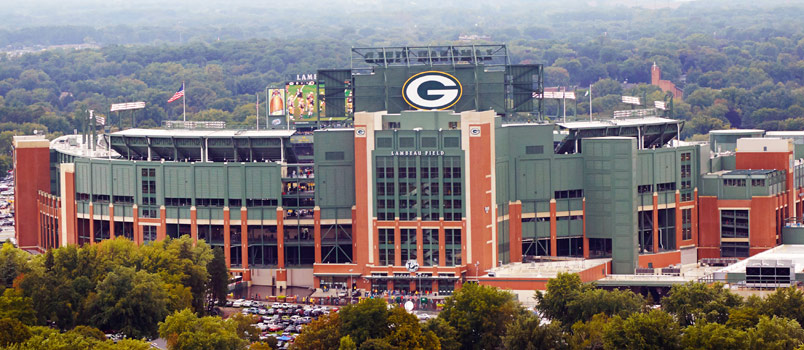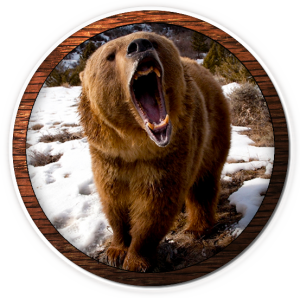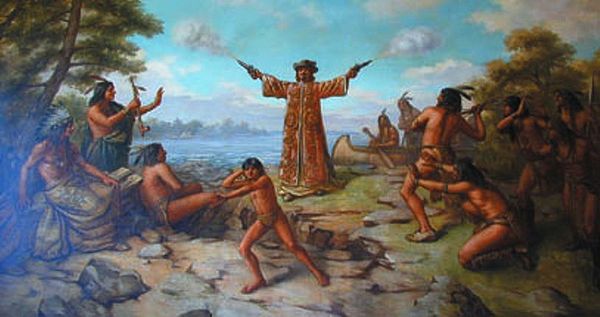
Go! Pack! Go!
Packers vs. 49ers ~ Get some, Pack!!!
Hoping for another win today for the Green Bay Packers.

Hoping for another win today for the Green Bay Packers.
Wild Rivers Whitetails ~ Wisconsin Big Buck Hunting
The video above was shot at Wild Rivers Whitetails in Northeastern Wisconsin hunting ranch in the fall and provides an overview of the Wisconsin property, deer, stands and lodge. Check it out!
Wild Rivers Whitetails is located in northeastern Wisconsin, in a region known for its crystal clear wild rivers. It is a natural setting for whitetails with large tracts of upland forests. It was an easy choice to establish Wild Rivers here in this Northwoods area of Wisconsin. Wild Rivers Whitetails was established in 1996 and isn’t just a business or a job, it is a lifestyle!
Owned & operated by Gary & Jane Nelson it is a family run operation with Gary and 3 of his brothers working full time on the farm, and guiding our hunts in the fall. They appreciate the family groups that hunt with them since family is what makes them successful. Everyone at WRW works hard to give their guests the best possible hunt adventure. In addition, we have all worked to support and enhance the deer and hunting industry both statewide and nationwide. Each year we work with various organizations to provide hunts for handicapped and disabled children.
Gary Nelson is the past president of both Whitetails of Wisconsin and North American Deer Farmers Association, which are industry organizations that promote deer farming and hunting.
To get more information on their monster buck hunts, breeding genetics and lodge visit their website: http://wildriverswhitetails.com/

There are alot of website designers out there ~ choose wisely. At Fox Valley Web Design we continue to evolve, upgrade and lead. We stay on top of the latest trends and standards from the World Wide Web Consortium (W3C).
Fox Valley Web Design TM is a registered trademarked. FVWD has been a fun, full-time business for 19 years and we invite you into the Fox Valley Web Design family. You will be in good company and have one of the best websites available. We are easy to work with, like to get things done in a timely manner and within your budget. All projects start with a free evaluation & estimate. We look forward to the opportunity of doing business with you and your staff.
 ThermOil.com
ThermOil.comWe have clients all over the United States but a majority of our clients are located in Wisconsin & UP of Michigan including clients in Green Bay, Appleton, Oshkosh, Milwaukee, Ashwaubenon, De Pere, Brillion, Waupaca, Stevens Point, Wausau, Madison, Wisconsin Dells, Door County, Fox Valley, Sturgeon Bay, Fish Creek, Washington Island, Egg Habor, Sheboygan, Manitowoc, Two Rivers, Algoma, Howard, Suamico, Crivitz, Eagle River, Butternut, Park Falls, St. Croix, Eau Claire, Menasha, Neenah, Little Chute, Kaukauna, Hilbert, Chilton, Fort Akinson, Jacksonport, Carlsville, Ephraim, Chicago, De Moines, Minnesota, St Paul, Minneapolis, Twin Cities, Michigan, North Dakota, South Dakota, Illinois, Florida, Nevada, Las Vegas, Dallas, Texas, Missouri, Sister Bay, Gills Rock, Rock Island, Montana, California, New Mexico, Arizonia, New Jersey, New York, Maine, Ohio, Pennsylvania, Massachusetts, Vermont, Rhode Island, Maryland, Delaware, Virginia, Colorado, Utah, Oregon and Washington.

The Leo Frigo Memorial (Tower Drive) Bridge is a bridge on the north side of Green Bay, Wisconsin. It carries Interstate 43 over the Fox River just south of its mouth into Green Bay (Lake Michigan). Formerly known as the Tower Drive Bridge, it was renamed in 2002 “in recognition and appreciation of Leo Frigo, a civic and philanthropic leader in the Green Bay area. The bridge opened to traffic in 1981. Because of the bridge’s height and slope, it is prone to being shut down during inclement weather. The bridge carried roughly 40,000 vehicles per day as of 2015.

La Baye was a small trading post established on the Baie des Puants (Green Bay, WI) in 1634 by Jean Nicolet. Nicolas Perrot, who was sent by Father Claude-Jean Allouez who was a French explorer of North America, continued the work that Nicolet had started. In 1671, the Jesuits constructed a mission. Fort La Baye was constructed in 1717. The town of La Baye was incorporated in 1754. At the end of the Seven Years’ War, it went under British control in 1761 and was renamed Green Bay.
By 1718, there were some Métis families in the very broad area of the fort, but no settlement focused on it specifically. Other families settled across the river from the fort in an area which was called Munnomonee, because of the Menominee native people that lived there.
It was not until 1763 that concerted civilian settlement by people with some European ancestry began in the area. The first settlement in that year was led by Charles de Langlade, who was the son of a French-Canadian father and an Odawa mother. Most of the families had come to La Baye from the Mackinac area.
In 1816 La Baye had a population of about 40 families, who were virtually all Métis. In the summer of 1820 La Baye was estimated by Henry Schoolcraft to have 500 inhabitants.
Nicolet is noted for being the first European to cross Lake Michigan. In 1634 he became the first European to explore what would become Wisconsin. Jean Nicolet landed at Red Banks, near modern-day Green Bay, Wisconsin, in search of a passage to the Orient. He and other French explorers had learned from their native contacts that the people who lived along these shores were called Ho-Chunk, which the French translated as “People of the Sea”. In their language, it meant “harvest (cutting) the rice,” as they used wild rice as a staple of their diet. Nicolet concluded that the people must be from or near the Pacific Ocean, and would provide a direct contact with China.
Nicolet became the French ambassador to the Ho-Chunk people. He wore brightly colored robes and carried two pistols, to convey his authority. The Ho-Chunk people appreciated his ritual display. With some Ho-Chunk guides, Nicolet ascended the Fox River, portaged to the Wisconsin, and travelled down it until it began to widen. So sure was he that he was near the ocean, that he stopped and went back to Quebec to report his discovery of a passage to the “South Sea,” unaware that he had just missed finding the upper Mississippi River.